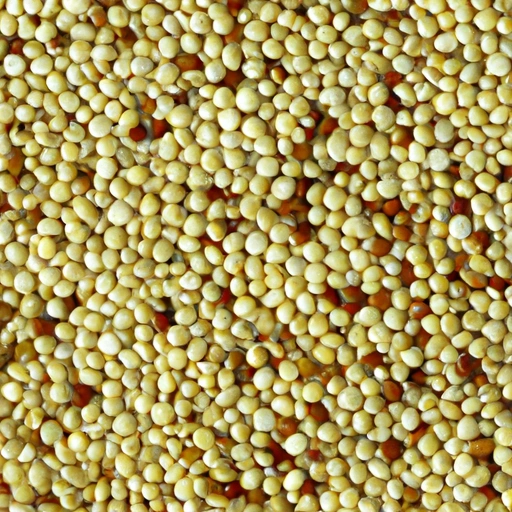Quinoa
Description

Quinoa is a pseudocereal that is commonly considered and used as a grain in various cuisines. It originated in the Andean region of South America, where it has been a staple food for thousands of years. Quinoa is highly regarded for its nutritional content, boasting a high protein content, a complete amino acid profile, and a rich supply of dietary fiber. It comes in various colors, including white, red, and black quinoa, each with subtle taste differences but generally possessing a nutty flavor and a unique, fluffy-yet-crunchy texture.
Common uses
Quinoa is often used as a base for salads, as a side dish to replace rice or pasta, in soups, and as an ingredient in veggie burgers. It can also be found in various breakfast dishes like porridge or incorporated into baked goods and snacks. Quinoa flour is also popular for gluten-free baking.
Nutritional value
Calories
One cup (185 grams) of cooked quinoa contains approximately 222 calories (American) / 929 kilojoules (European).
Protein
Quinoa provides about 8 grams of protein per cup (185 grams), making it a great source of plant-based protein.
Fat
There is roughly 3.5 to 4 grams of fat per cup (185 grams) of cooked quinoa.
Carbohydrates
Each cup of cooked quinoa consists of about 39 grams of carbohydrates, including 5 grams of dietary fiber.
Vitamins
Quinoa is a good source of B-vitamins, especially folate (B9), and also contains vitamin E.
Minerals
It's rich in minerals such as magnesium, phosphorus, potassium, calcium, and iron.
Health benefits
Consuming quinoa can contribute to a healthy diet due to its high protein content and full spectrum of amino acids. It's also gluten-free, making it an excellent choice for those with celiac disease or gluten intolerance. The dietary fiber in quinoa promotes digestive health, while the iron and magnesium content support energy levels and overall vitality.
Potential risks
Quinoa is generally safe to eat, but it does contain naturally occurring saponins, which can be bitter and may cause stomach irritation if not rinsed off properly before cooking. People with sensitivities to oxalates or a tendency to form kidney stones should consume quinoa in moderation due to its moderate oxalate content.
Common recipes
Quinoa is featured in a wide range of recipes, from quinoa salads and bowls to pilafs, stuffed vegetables, and even quinoa-based desserts like cookies and puddings.
Cooking methods
Quinoa can be boiled, steamed, or even popped like popcorn. It should be rinsed thoroughly before cooking to remove any residual saponins.
Pairing with other ingredients
Quinoa pairs well with a variety of ingredients, including vegetables, beans, nuts, herbs, and spices. It also complements the flavors of both sweet and savory dishes.
Summary
Quinoa is a versatile and nutritious pseudocereal that has become a prized component in health-conscious and gluten-free diets. As an ancient crop with a rich history, it offers numerous culinary applications and is revered for its comprehensive nutritional benefits. Despite its few potential risks, quinoa's global appeal continues to grow, making it a staple in many modern kitchens around the world.